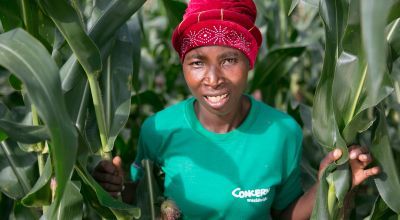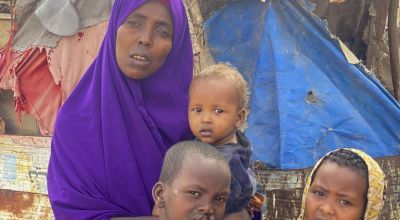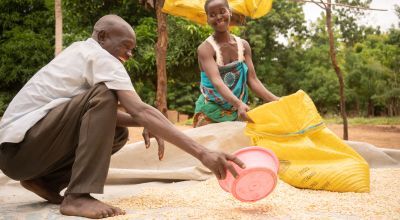
Read our 2023 annual report

Knowledge Hub
We’re just a few years away from the deadline to meet the United Nations’ Sustainable Development Goals. Number one on the list: “End poverty in all its forms everywhere.”
This is no small feat, but it’s also not impossible — even if we may need a deadline extension given the economic impact of COVID-19.
What would that look like for the world? How do we even begin to sustainably break the cycle of poverty that, as of 2023, has trapped more than 719 million people? There are some key solutions to poverty that help make this goal a reality. Here are the top seven.
1. Equality and representation for all
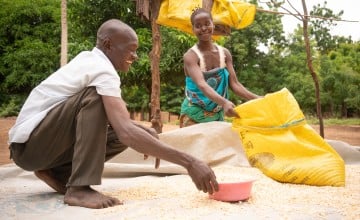
One of the main causes of poverty is inequality — the systemic barriers that lead to groups of people without representation or a voice in their communities. In order for a community or country to work its way out of poverty, all groups must be involved in the decision-making process — especially when it comes to having a say in the things that determine your place in society.
According to the UN’s High-Level Panel for Women’s Economic Empowerment, women’s unpaid labour adds up to $10 trillion per year — 13% of the global GDP. Likewise, according to the Food and Agriculture Organisation, women own less than 20% of agricultural land, yet make up 60% of the agricultural workforce in parts of Africa and Asia. Former FAO Director-General José Graziano da Silva said in 2016 that “women are the backbone of our work in agriculture… when women have opportunities, the yields on their farms increase – also their incomes. Natural resources are better managed. Nutrition is improved. And livelihoods are more secured.”
Ensuring that all marginalised communities have a seat at the table and are given the tools they need to succeed is key to all other solutions to poverty.
2. Building resilience…

Poverty is most likely to occur when there is a high combination of inequality and risk — with risk being its own combination of a person or group’s level of vulnerability and the hazards they face. For instance, the Democratic Republic of Congo has suffered ongoing conflict since declaring independence from France in 1960.
This means that millions of Congolese are already vulnerable, being away from home in temporary shelters while still facing the threat of conflict. Those hazards are compounded, however, when you take into account other crises that affect the country which, in the last few years, has endured the world’s second-largest Ebola outbreak, a volcanic eruption, and a growing hunger crisis.
To offset this, we need to ensure that the most vulnerable people and communities are able to build resilience — whether it’s preventative education and treatment support during an epidemic, recovery and resilience interventions in the face of climate disasters, or health, nutrition, and shelter resources for refugees and IDPs.
3. …especially climate resilience

Resilience against climate change is especially important and deserves its own mention. According to the World Bank, climate change could force an additional 100 million people into extreme poverty over the next decade without any urgent action taken.
From drought in the Horn of Africa to floods in Pakistan and monsoon season in Bangladesh, we can’t prevent the natural disasters that are becoming more frequent and destructive year after year. But we can help the communities most vulnerable to these crises become better prepared in order to protect their farms, their homes, their loved ones, and their livelihoods. Eco-friendly farming techniques such as Climate Smart Agriculture preserve vital topsoil, allowing land to recover from degradation, and better adapt to extreme weather.
4. Increase access to education

According to UNESCO, if all students in low-income countries had just basic reading skills, an estimated 171 million people could escape extreme poverty. If all adults completed secondary education, we could cut the global poverty rate by more than half. Education develops skills and abilities, corrects some of the imbalances that come out of marginalisation, and decreases both risk and vulnerability.
Some of the key areas of focus for making sure that education is truly for all involve breaking down the barriers to education — creating access in remote areas, supporting teachers in their work to deliver quality education, and making sure that education is available to children living in fragile contexts.
5. Improve food security and access to clean water

Simply eating three meals a day and getting a healthy amount of calories and nutrients can go a long way to addressing the cycle of poverty. When a person doesn’t have enough to eat, they lack the strength and energy needed to work. Contaminated water can lead to debilitating illnesses.
What’s more, improving access to clean water can mean that those who live in rural communities (often women and girls — see our first point on inequality) will save time walking to their nearest water point. Current estimates suggest that women and girls collectively spend 200 million hours every day walking long distances to fetch water.
Adequate healthcare options for all goes hand-in-hand with this solution, and represents a larger need for governments to offer the basic social protections and services to keep their citizens healthy, and give them affordable treatment options when they aren’t.
6. End war and conflict

We’ve seen this play out time and again: While estimates around data for the country vary, Syria’s poverty rate has increased from approximately 12% in 2007 to 83% in 2019. Conversely, in Nepal, a decade-long civil war came to a close in 2006, which correlates with a sharp increase in gross national income (GNI) and gross domestic product (GDP) year over year. Likewise, the establishment of a United Nations peacekeeping operation in Cambodia in 1992 (following a deadly civil war and war with Vietnam) helped to forge stability within the country and grow its middle class: The country’s poverty rate dropped from 47.8% in 2007 to 13.5% by 2014.
No war means that budgets allocated to cover the cost of conflict can be used to deliver public services. It also reduces risks faced by the most vulnerable communities, and ensures that goals towards equality and inclusion can be maintained.
7. Embrace cash and microfinance
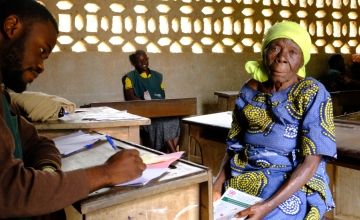
One of the ways Cambodia’s transition from wartime to peace (including the repatriation of over 300,000 Cambodian refugees) was so smooth was thanks to the idea of buying on credit. While such an influx of returnees could place a strain on resources and create financial dire straits, microfinancing models introduced into the country helped to establish savings, loans, insurance, and cash transfer services in communities that need them the most, allowing people to purchase the tools and services they need in order to become self-sufficient. Between 1998 and 2018, Cambodia’s economy grew by an average of 8% each year, and its middle class began to flourish.
Cash seems like an even more obvious solution to poverty. While the traditional image of humanitarian aid may be crates of supplies like food, water, and tents, distributing cash has become more common. It’s cheaper and faster to get into a country, gives its recipients the autonomy to make their own purchasing decisions, and supports local and national economies.
Sometimes, a small startup grant (even as small as $100) is all it takes to help a family living below the poverty line to launch a new business while keeping on top of their bills and keeping their children fed. The net effect is that they are able to lift themselves out of poverty, for good.
It’s a small step — but one that promises a ripple effect of change.


